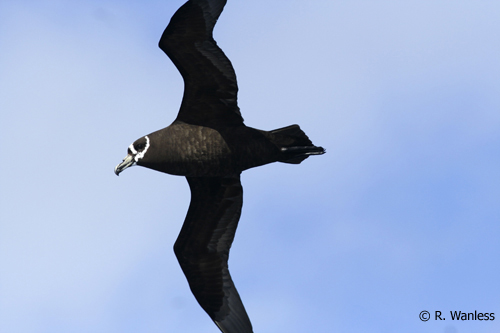Lise Ruffino (Section of Ecology, Department of Biology, University of Turku, Finland) and colleagues have assessed the impacts of rodents on island bird populations, including procellariiform seabirds, such as the ACAP potential candidate and Vulnerable Yelkouan Shearwater Puffinus yelkouan, in the journal Wildlife Research.
The paper’s abstract follows:
“Bird conservation is nowadays a strong driving force for prioritising rodent eradications, but robust quantitative estimates of impacts are needed to ensure cost-effectiveness of management operations. Here, we review the published literature to investigate on what methodological basis rodent effects on island bird communities have been evaluated for the past six decades. We then discuss the advantages and limitations of each category of methods for the detection and quantification of impacts, and end with some recommendations on how to strengthen current approaches and extend our knowledge on the mechanisms of impacts. Impact studies (152 studies considered) emphasised seabirds (67%), black rats (63%) and the Pacific Ocean (57%). Among the most commonly used methods to study rodent impacts on birds were the observation of dead eggs or empty nests while monitoring bird breeding success, and the analyses of rodent diets, which can both lead to misleading conclusions if the data are not supported by direct field evidence of rodent predation. Direct observations of rodent–bird interactions (19% of studies) are still poorly considered despite their potential to reveal cryptic behaviours and shed light on the mechanisms of impacts. Rodent effects on birds were most often measured as a change or difference in bird breeding parameters (74% of studies), while estimates of bird population growth rates (4%) are lacking. Based on the outcomes of this literature review, we highlight the need for collecting unbiased population-level estimates of rodent impacts, which are essential prerequisites for predicting bird population growth scenarios and prioritising their conservation needs. This could be achieved by a more systematic integration of long-term monitoring of bird populations into rodent management operations and modelling bird population dynamics. We also strongly recommend including various complementary methods in impact assessment strategies to unravel complex interactions between rodents and birds and avoid faulty evidence. Finally, more research should be devoted to a better understanding of the cases of non-impacts (i.e. long-term coexistence) and those impacts mediated by mechanisms other than predation and ecosystem-level processes.”
Yelkouan Shearwater, photograph by Matthew Borg Cardona
Reference:
Ruffino, L., Zarzoso-Lacoste, D. & Vidal, E. 2015. Assessment of invasive rodent impacts on island avifauna: methods, limitations and the way forward. Wildlife Research 42: 185-195.
John Cooper, ACAP Information Officer, 24 June 2015

 English
English  Français
Français  Español
Español 





